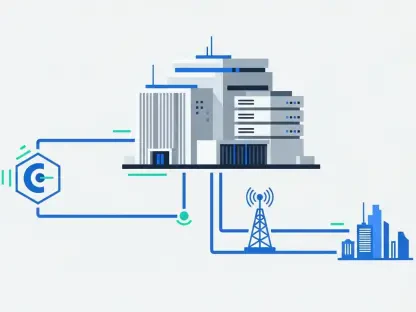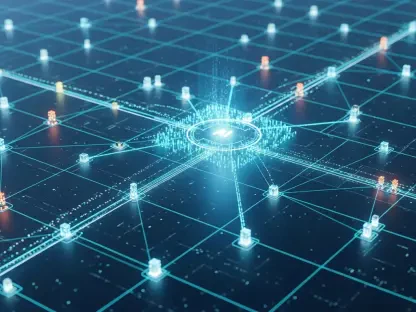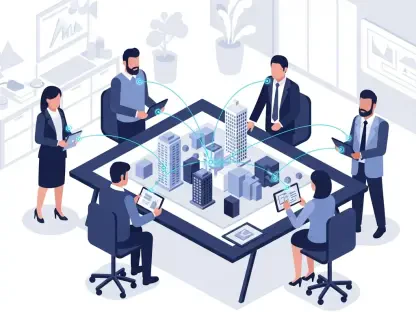In an era where emergencies can strike with little warning, the ability to respond swiftly and effectively has become more critical than ever, and the Internet of Things (IoT) is stepping up to meet this urgent need. Across the spectrum of crises—from devastating natural disasters like floods and wildfires to urban building fires and sudden medical emergencies—IoT devices such as sensors, wearable tech, and drones are equipping first responders with real-time data and actionable insights. This isn’t just about incremental improvements; it’s a fundamental shift in how disasters are managed, slashing response times dramatically and enhancing safety for both those in peril and the brave individuals rushing to their aid. By integrating IoT with cutting-edge technologies like artificial intelligence (AI) and high-speed 5G networks, a new frontier in emergency preparedness and response is emerging, promising to save more lives and reduce destruction on an unprecedented scale.
Harnessing Speed Through Early Detection
The standout strength of IoT technology lies in its capacity to identify potential catastrophes before they escalate into full-blown disasters. Sensors embedded in various environments continuously track critical indicators like temperature shifts, air quality changes, and ground vibrations, catching early signs of threats such as earthquakes, floods, or wildfires. When paired with AI-driven predictive analytics, these devices can issue alerts within seconds, often cutting response times by as much as a third. This rapid detection is not merely a technical achievement; it’s a lifeline, enabling first responders to mobilize proactively rather than scrambling to react after the fact. The difference these precious moments make is profound, often determining whether lives are saved or lost and whether property damage can be minimized before it spirals out of control.
Moreover, the impact of early detection extends beyond immediate response to shaping broader disaster strategies. IoT systems provide a constant stream of data that can be analyzed to predict patterns and vulnerabilities in specific regions, allowing authorities to allocate resources more effectively. For instance, areas prone to flooding can be equipped with advanced water-level sensors that trigger automated alerts to emergency services and residents alike. This foresight transforms the traditional approach to crisis management, shifting the emphasis from damage control to prevention. As these technologies become more widespread, the ability to anticipate and mitigate risks before they manifest is redefining safety standards, ensuring communities are better shielded from the unpredictable forces of nature.
Economic and Humanitarian Gains of Proactive Measures
Investing in IoT for emergency preparedness offers a compelling return, not just in human lives but also in financial savings. Data from the UN Office for Disaster Risk Reduction highlights a striking ratio: every dollar spent on disaster readiness saves four dollars in post-event rebuilding costs. This statistic gains even greater weight in light of the escalating frequency and severity of natural disasters driven by climate change, which in 2023 alone resulted in nearly 95,000 deaths and $380 billion in global damages. IoT’s role in continuous monitoring and real-time data analysis empowers communities to curb these staggering losses by addressing threats head-on before they balloon into widespread devastation, prioritizing smart prevention over expensive recovery.
On the humanitarian front, the value of IoT extends to fostering resilience among vulnerable populations. By enabling faster and more informed responses, these technologies ensure that aid reaches those in need without delay, reducing suffering and preserving dignity in the wake of crises. For example, remote sensors in disaster-prone areas can alert relief organizations to emerging threats, allowing them to preposition supplies and personnel for immediate deployment. This proactive stance not only mitigates the physical impact of emergencies but also alleviates the psychological toll on affected communities, offering a sense of security through preparedness. As IoT solutions continue to evolve, their capacity to balance economic efficiency with humanitarian impact underscores their indispensable role in modern disaster management frameworks.
Customized IoT Applications for Diverse Emergencies
The versatility of IoT technology is evident in its tailored applications across a wide array of emergency scenarios, each addressing unique challenges with precision. In wildfire management, programs like ALERTCalifornia deploy over 1,000 cameras, drones, and sensors, integrated with AI, to monitor expansive terrains and detect smoke at its earliest stages. These tools provide firefighters with critical data, such as thermal imaging and fire perimeter tracking, enabling them to prioritize response areas effectively. Meanwhile, in urban environments, smart devices like the X-Sense smoke and carbon monoxide monitor identify exact fire locations within buildings, and IoT-enabled traffic cameras help optimize routes for emergency vehicles, shaving off vital seconds during high-stakes situations.
Beyond environmental disasters, IoT is equally transformative in structural emergencies, enhancing safety in densely populated settings. Smart building systems equipped with IoT sensors can detect gas leaks, structural weaknesses, or electrical faults, alerting both occupants and responders before conditions worsen. These systems often integrate with city-wide emergency networks, ensuring a coordinated response that minimizes chaos and maximizes efficiency. In coastal regions, IoT devices monitor tidal patterns and storm surges, providing early warnings for potential evacuations. This adaptability across rural, urban, and coastal contexts demonstrates how IoT can be customized to meet the specific demands of any emergency, delivering targeted solutions that enhance overall response capabilities and safeguard diverse communities from varied threats.
Redefining Medical Crises with Innovative Tools
In the realm of medical emergencies, IoT is proving to be a literal lifesaver by bridging critical gaps in response times. Wearable devices like MyResQR monitor vital signs in real time, automatically alerting paramedics to life-threatening conditions such as cardiac events or respiratory distress before a patient even realizes the severity. This immediate notification ensures that help is dispatched without delay, often making the difference between recovery and tragedy. Furthermore, the integration of 5G connectivity in ambulances allows for instantaneous transmission of patient data to hospitals, enabling doctors to prepare specialized care in advance and potentially bypass emergency room bottlenecks, thus accelerating treatment.
Adding another layer of innovation, drones are redefining on-site medical assistance through strategic partnerships like the Verizon Frontline Team with EMTs. These unmanned aerial vehicles can deliver essential supplies—such as defibrillators or medications—to remote or hard-to-reach locations while live-streaming guidance to bystanders, empowering them to act before professionals arrive. This dual approach of direct aid and real-time instruction maximizes the chances of stabilizing a patient in those crucial early moments. As IoT continues to intersect with medical technology, the seamless coordination between devices, responders, and healthcare facilities is setting a new standard for emergency care, ensuring that even the most urgent situations are met with swift, informed action.
Amplifying Impact with Collaborative Platforms
The true potential of IoT in emergency response is magnified through sophisticated platforms and strategic partnerships that integrate disparate technologies into cohesive systems. Solutions like D-Resilio, developed by Vantiq in collaboration with NTT Data, leverage AI to deliver real-time updates and actionable recommendations during unfolding crises. These platforms are designed to adapt, learning from each incident to refine future responses, ensuring that every emergency handled becomes a stepping stone for improved outcomes. Such systems exemplify how technology can evolve in high-pressure environments, offering dynamic tools that keep pace with rapidly changing conditions.
Collaboration extends beyond private sector innovation to include government initiatives, amplifying the reach and effectiveness of IoT applications. Efforts like Cal Fire demonstrate how public agencies can harness sensor networks and data analytics to tackle large-scale disasters such as wildfires with unprecedented precision. These partnerships foster a unified approach, connecting local, regional, and national resources into a networked response framework. By prioritizing speed, adaptability, and data-driven decision-making, these collaborative efforts are building a robust infrastructure for emergency management, ensuring that IoT’s benefits are not just theoretical but practically implemented to protect communities on a global scale.
Building a Resilient Tomorrow
Reflecting on the strides made, it’s evident that IoT technology has already begun reshaping emergency response by providing tools that prioritize speed, precision, and proactive measures. The journey showcases how sensors, drones, and wearables have saved countless lives by equipping responders with real-time insights during wildfires, urban incidents, and medical crises. Moving forward, the focus must shift to scaling these innovations through wider adoption and investment in integrated systems. Governments and private entities should collaborate to expand IoT infrastructure, particularly in underserved regions, while refining AI algorithms to enhance predictive accuracy. Addressing data privacy and cybersecurity will also be crucial to maintain public trust in these systems. By committing to these next steps, the foundation laid by IoT can be built upon to create a future where communities are not just reacting to disasters but are consistently ahead of them, safeguarded by technology’s ever-advancing capabilities.









